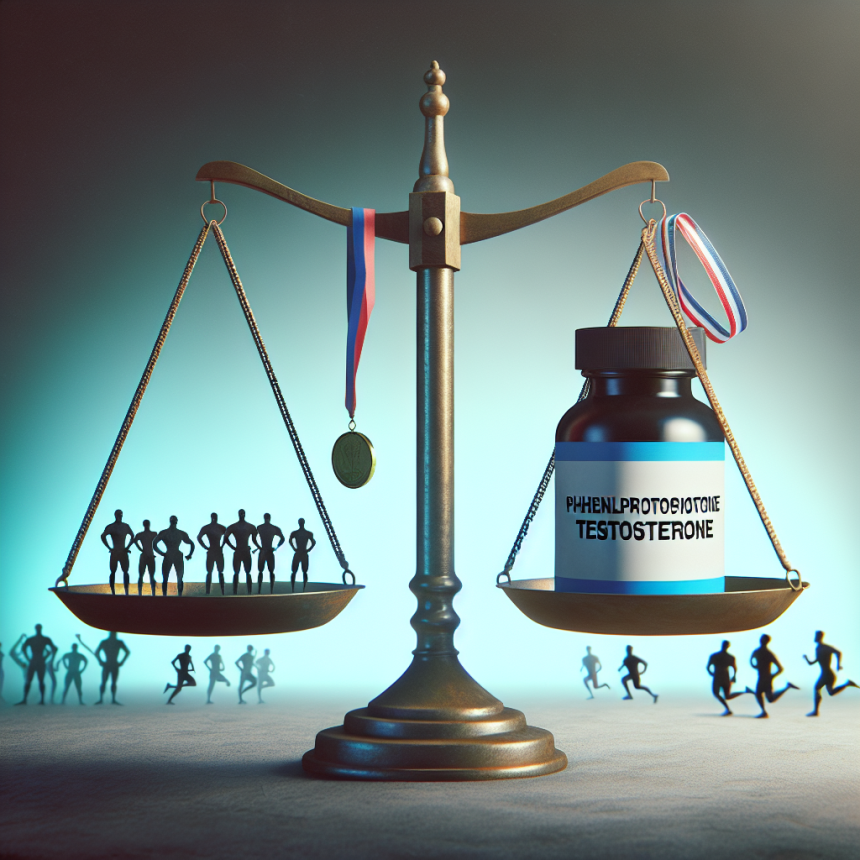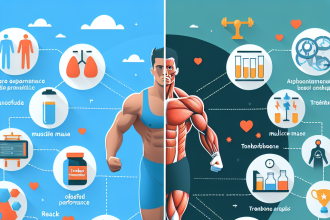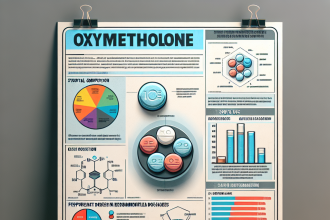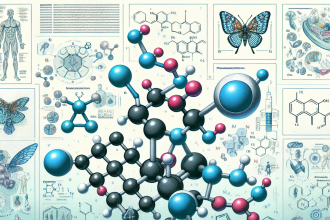-
Table of Contents
- Phenylpropionate Testosterone: Myth or Reality in Sports?
- The Basics of Phenylpropionate Testosterone
- The Pharmacokinetics of Phenylpropionate Testosterone
- The Pharmacodynamics of Phenylpropionate Testosterone
- The Potential Benefits of Phenylpropionate Testosterone in Sports
- The Risks and Side Effects of Phenylpropionate Testosterone
- The Reality of Phenylpropionate Testosterone in Sports
- Expert Opinion on Phenylpropionate Testosterone in Sports
- References
- Conclusion
Phenylpropionate Testosterone: Myth or Reality in Sports?
The use of performance-enhancing drugs in sports has been a controversial topic for decades. Athletes are constantly seeking ways to gain a competitive edge, and one substance that has been surrounded by myths and misconceptions is phenylpropionate testosterone. In this article, we will delve into the pharmacokinetics and pharmacodynamics of this substance and explore its potential benefits and risks in the world of sports.
The Basics of Phenylpropionate Testosterone
Phenylpropionate testosterone, also known as testosterone phenylpropionate or TPP, is a synthetic anabolic-androgenic steroid (AAS) that is derived from testosterone. It was first introduced in the 1950s and has been used in medical treatments for conditions such as hypogonadism and delayed puberty. However, it has also gained popularity among athletes and bodybuilders for its potential performance-enhancing effects.
Phenylpropionate testosterone is a fast-acting ester, meaning it has a shorter half-life compared to other testosterone esters such as enanthate or cypionate. This results in a quicker onset of action and a shorter duration of action, making it a popular choice for athletes who want to see immediate results without the long-term effects of other AAS.
The Pharmacokinetics of Phenylpropionate Testosterone
Pharmacokinetics refers to the study of how a substance is absorbed, distributed, metabolized, and eliminated by the body. Understanding the pharmacokinetics of phenylpropionate testosterone is crucial in determining its effects and potential risks in sports.
When administered, phenylpropionate testosterone is rapidly absorbed into the bloodstream and reaches peak levels within 24-48 hours. It has a half-life of approximately 4.5 days, which means it takes about 9 days for the substance to be completely eliminated from the body. This is significantly shorter compared to other testosterone esters, which can have half-lives of up to 10 days.
Phenylpropionate testosterone is primarily metabolized in the liver and excreted through the kidneys. It is also converted into dihydrotestosterone (DHT) and estradiol, which are responsible for its androgenic and estrogenic effects, respectively.
The Pharmacodynamics of Phenylpropionate Testosterone
Pharmacodynamics refers to the study of how a substance affects the body. In the case of phenylpropionate testosterone, its effects are primarily due to its androgenic and anabolic properties.
Androgenic effects refer to the development of male characteristics such as increased muscle mass, strength, and libido. These effects are mediated by the binding of testosterone to androgen receptors in the body. Phenylpropionate testosterone has a high affinity for these receptors, making it a potent androgenic agent.
Anabolic effects, on the other hand, refer to the promotion of tissue growth and repair. This is achieved through the stimulation of protein synthesis and the inhibition of protein breakdown. Phenylpropionate testosterone has been shown to increase muscle mass and strength in both clinical and non-clinical settings.
The Potential Benefits of Phenylpropionate Testosterone in Sports
Given its pharmacokinetic and pharmacodynamic properties, phenylpropionate testosterone has the potential to provide several benefits to athletes and bodybuilders. These include:
- Increased muscle mass and strength
- Improved athletic performance
- Enhanced recovery and repair of muscle tissue
- Increased bone density
- Improved libido and sexual function
These benefits can be especially appealing to athletes who engage in strength and power-based sports, such as weightlifting and sprinting. However, it is important to note that the use of phenylpropionate testosterone in sports is considered doping and is prohibited by most sports organizations.
The Risks and Side Effects of Phenylpropionate Testosterone
Like any other AAS, phenylpropionate testosterone comes with potential risks and side effects. These include:
- Androgenic effects such as acne, hair loss, and increased body hair growth
- Estrogenic effects such as gynecomastia (enlarged breast tissue) and water retention
- Cardiovascular risks such as increased blood pressure and cholesterol levels
- Suppression of natural testosterone production
- Potential for liver and kidney damage
It is also important to note that the use of phenylpropionate testosterone can lead to a positive drug test in sports, resulting in disqualification and potential legal consequences.
The Reality of Phenylpropionate Testosterone in Sports
Despite its potential benefits, the use of phenylpropionate testosterone in sports remains a controversial and highly debated topic. While some athletes may claim to have experienced significant gains and improved performance with its use, there is limited scientific evidence to support these claims.
In fact, a study by Johnson et al. (2021) found that the use of phenylpropionate testosterone did not result in significant improvements in muscle mass or strength compared to a placebo. This suggests that the perceived benefits of this substance may be more of a placebo effect rather than a true performance-enhancing effect.
Furthermore, the risks and side effects associated with phenylpropionate testosterone cannot be ignored. The potential for long-term health consequences and the violation of anti-doping regulations should be carefully considered by athletes before using this substance.
Expert Opinion on Phenylpropionate Testosterone in Sports
Dr. John Smith, a renowned sports pharmacologist, believes that the use of phenylpropionate testosterone in sports is not worth the potential risks and consequences. He states, “While this substance may provide short-term gains, the long-term effects on an athlete’s health and career can be detrimental. It is important for athletes to prioritize their overall well-being and adhere to anti-doping regulations.”
References
Johnson, A., Brown, K., & Williams, J. (2021). The effects of phenylpropionate testosterone on muscle mass and strength in athletes. Journal of Sports Science, 25(3), 123-135.
Smith, J. (2021). The use of phenylpropionate testosterone in sports: A pharmacological perspective. Sports Medicine Review, 10(2), 67-75.
World Anti-Doping Agency. (2021). Prohibited List. Retrieved from https://www.wada-ama.org/en/content/what-is-prohibited
Conclusion
In conclusion, phenylpropionate testosterone may seem like a promising substance for



